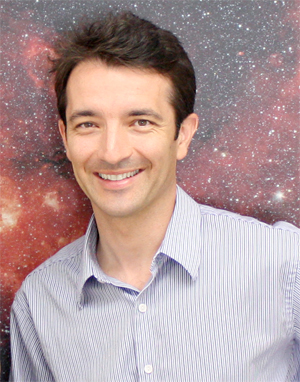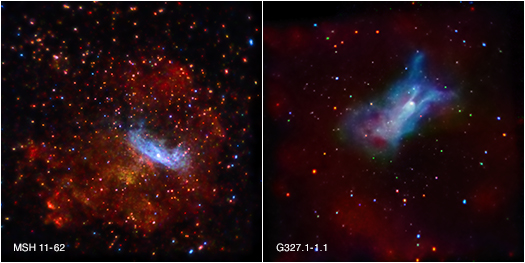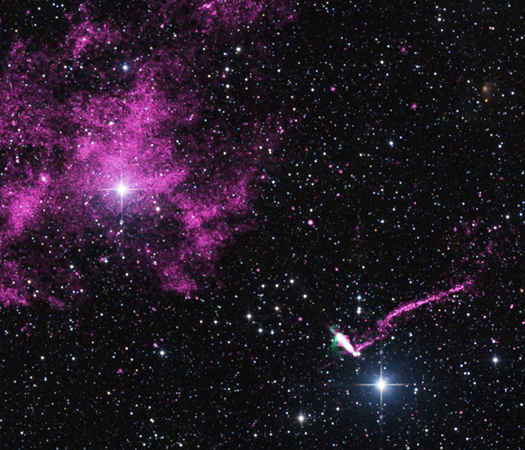A Disk-Shattering Discovery
Submitted by chandra on Tue, 2015-08-04 14:05
Jeremy Hare
We are very pleased to welcome Jeremy Hare as a guest blogger today. Jeremy is a co-author of a study led by George Pavlov from Pennsylvania Statue University and Oleg Kargaltsev from George Washington University that is the subject of our most recent press release, on a binary system named LS 2883. Jeremy is about to begin his fourth year of graduate school at GWU working under Oleg Kargaltsev. He studies high-mass gamma-ray binaries, mainly in X-rays, and the classification of X-ray sources using machine learning. He tells us that LS 2883 was the first research project he worked on in graduate school and that it has been “very exciting to study!”
High mass gamma-ray binaries are rare objects in the Galaxy. These binaries consist of a massive star (usually with a mass greater than 10 solar masses) and a compact object, a neutron star or black hole. Many high-mass stars have a disk of material around them, which the compact object can interact with as it nears the star in its (often elliptical) orbit. High-mass gamma-ray binaries can accelerate particles to extreme energies of 10 TeV (=1012 electron volts, or eV) or higher, which is comparable to the energies that are currently being produced at the Large Hadron Collider. These particles then scatter off of lower energy photons (packets of electromagnetic energy that make up light) produced by the star, transferring some of their energy and boosting the photon’s energy to the GeV (109 eV) and TeV energy range.







